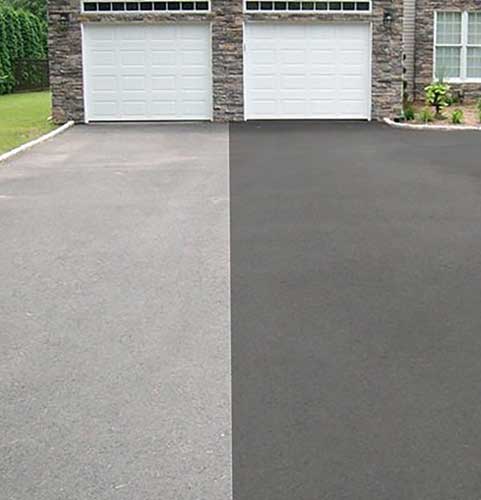Warm Mix Asphalt: A Sustainable Solution for Pavement
Hot Mix Asphalt (HMA) has actually emerged as a leading sustainable choice for sidewalk options, providing a myriad of ecological benefits and cutting-edge innovations. As the demand for environment-friendly building practices expands, discovering the nuances of HMA's sustainability can give useful understandings into the future of sidewalk remedies.
Environmental Benefits of Hot Mix Asphalt

Furthermore, Hot Mix Asphalt assists to alleviate city warm island impacts. Its dark shade takes in sunshine, minimizing the quantity of warm reflected back into the atmosphere contrasted to lighter-colored sidewalks. This can reduce ambient temperature levels in urban locations, reducing the need for air conditioning and eventually minimizing energy intake.
Additionally, Warm Mix Asphalt adds to boosted stormwater administration. Its porous nature enables water to infiltrate the sidewalk and charge groundwater products, lowering overflow and the risk of flooding. These ecological benefits make Warm Mix Asphalt a sustainable choice for paving roadways and highways.
Energy Performance in HMA Production
Is energy effectiveness a critical factor in the production of Warm Mix Asphalt (HMA)? Energy plays a significant function in the production of HMA, impacting both cost and environmental sustainability. One crucial aspect of energy performance in HMA manufacturing is the use of cozy mix asphalt (WMA) innovations.
Additionally, innovations in plant innovations have led to even more energy-efficient HMA manufacturing procedures. Modern plants are developed with attributes like recycled asphalt pavement (RAP) processing abilities, reliable heater systems, and enhanced insulation, all adding to energy financial savings. By optimizing energy use in HMA production, the market can reduce its carbon footprint while maintaining high-quality pavement products. Power effectiveness is, therefore, an important factor to consider in making sure the sustainability of Hot Mix Asphalt production.
Recyclability of Warm Mix Asphalt
The recyclability of Hot Mix Asphalt (HMA) is a pivotal facet of its sustainability and long-lasting ecological impact. HMA is among one of the most recycled materials in the United States, with over 100 million lots of redeemed asphalt pavement (RAP) being reused every year in new sidewalk construction. Reusing HMA provides a number of ecological advantages, such as decreasing the demand for virgin materials, reducing energy intake during production, and reducing the quantity of waste sent to landfills.
The procedure of recycling HMA involves crushing the existing pavement, squashing it into smaller sized pieces, and mixing it with new accumulation and asphalt binder to develop a recycled mix. Overall, the recyclability of HMA plays a considerable duty in advertising lasting methods within the pavement industry.

Long-Term Efficiency of HMA
Asphalt sidewalks show resilience and durability over an extended duration, showing the lasting efficiency of Warm Mix Asphalt (HMA) The longevity of HMA can be credited to its capability to withstand heavy web traffic tons, severe climate condition, and the impacts of check out this site aging. Studies have revealed that properly designed and properly built HMA sidewalks can last for 20 years or more with regular maintenance. The trick to maximizing the long-term performance of HMA hinges on utilizing premium products, following finest techniques in building, and implementing effective maintenance approaches. Correct water drainage, routine evaluations, and timely fixings are necessary for preserving the architectural honesty of HMA pavements with time. Furthermore, improvements in HMA modern technology, such as the use of polymer-modified binders and warm mix asphalt, have better boosted the longevity and long life of HMA sidewalks. By focusing on quality building and upkeep methods, HMA proceeds to show itself as a lasting and cost-effective remedy for lasting sidewalk framework.

HMA: Resilience and Sustainability
Showing both resilience and sustainability, Warm Mix Asphalt (HMA) has actually come to be a keystone in the building and construction of lasting pavement infrastructures - regrading. HMA's resilience originates from its capability to endure hefty tons, rough climate condition, and high web traffic volumes, making it a trustworthy choice for streets, highways, and airport paths. The make-up of HMA, which typically includes accumulations, binder, and filler, plays a critical role Full Report in improving its long life and resistance to damage
Additionally, HMA's sustainability exists in its recyclability and energy-efficient production procedure. The ability to reuse recovered asphalt pavement (RAP) in new HMA mixes reduces the need for virgin materials and decreases the environmental influence of pavement construction and upkeep. Furthermore, the energy performance of producing HMA exists in its reduced blending temperatures compared to other pavement materials, resulting in lowered energy consumption and greenhouse gas discharges.
Final Thought
In final thought, warm mix asphalt (HMA) provides a lasting solution for sidewalk with its environmentally pleasant features. HMA's recyclability, power performance in manufacturing, and long-lasting toughness make it an environment-friendly selection for road construction.
HMA is one of the most recycled materials in the United States, with over 100 million lots of recovered asphalt sidewalk (RAP) being recycled every year in new pavement construction.The process of recycling HMA includes crushing the existing sidewalk, crushing it into smaller items, and blending it with new accumulation and asphalt binder to develop a recycled mix.Asphalt pavements demonstrate resilience and strength over an extensive period, showing the long-term performance of Warm Mix Asphalt (HMA) Furthermore, improvements in HMA technology, such as the usage of polymer-modified binders and warm mix asphalt, have actually even more enhanced the toughness and long life of HMA sidewalks. The resource ability to reuse redeemed asphalt pavement (RAP) in brand-new HMA mixtures lowers the need for virgin products and decreases the environmental effect of pavement construction and maintenance.